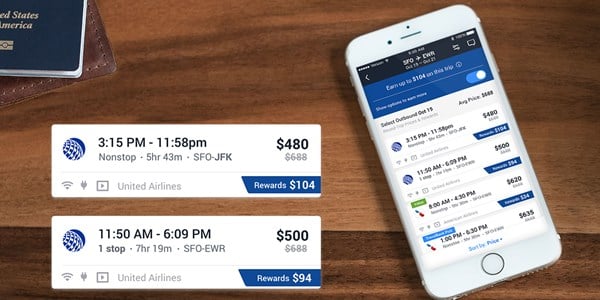)
Business travel can be hellish to manage. With employees flying all over the world, there are flights to book, accommodation to arrange, and an endless list of miscellaneous costs and tasks to keep on top of.
In most cases, this is pure drudgery.
Which is a shame. Because work trips can be both highly productive and a pleasure for employees. They should be a way to expand your network, increase your company's exposure, and create lasting experiences.
So why is managing travel such a chore? And what can you do to fix it?
In this post, we go into detail about the biggest hassles with corporate travel. (They're actually quite simple, and so's the remedy). We also look at some tools that can help, and discuss how travel and expense management go hand-in-hand.
So let's begin.
What is corporate travel management?
Put simply, travel management is the structure that a company has in place to oversee and facilitate business travel. This includes the processes of planning a trip for booking and paying for everything necessary, as well as the approvals and documents needed to ensure compliance.
Some companies outsource this to specialized travel agencies. Others bring in dedicated travel managers. In this piece, we’re going to focus more on the impact that software can have, and how automating much of your travel management is better for everyone in the company.
Let’s start by identifying what makes managing business travel so difficult.
The biggest challenges for corporate travel
Company travel is still an area in which most businesses struggle. Even if you think you have it under control, you may still cost yourself serious time and effort just to handle what should be simple tasks.
That’s normal, but it’s not ideal. Do you find the following issues affecting your day-to-day?
1. Managing large numbers of requests
Most companies have someone who’s eventually responsible for monitoring travel. In large businesses, there’ll be a dedicated travel manager. But in smaller and growing companies, this role often falls to someone in the administration or finance teams. And it’s just one of their jobs.

When company travel is commonplace, this becomes a real burden. You have requests coming from all over the business, and they don’t always follow the proper procedures.
One team member emails you, while another sends a Slack message. Worse still, you have employees coming to see you in person, distracting you from what you should be doing.
It’s the disparate and inconsistent nature of these interactions that make them a problem. This is one of the key benefits of automation, which we’re going to look at shortly.
2. Tracking approvals
Just as the admin or finance person needs to track requests, they also need to ensure that travel has been authorized by the right people. This usually means a team leader or manager, but in some companies also requires the CEO’s sign-off.
These are more touch points—more steps—in an already drawn-out process. But because they’re mandatory, there’s no getting around them.
Here’s where your travel management system can truly help. The approval process can be baked in, so that each manager is notified and can give their consent without anyone having to leave their desk.
3. Keeping spending in check
Travel is part of running a business, and is seen as essential for growth. But the bill that comes with it can be hard to stomach.
There’s a renewed focus on work travel. Employees want the opportunity, and companies are often keen to oblige.
However, this can easily lead to an inflated travel budget. And managers then have to start turning down reasonable requests.
According to the experts at TravelPerk, one key reason for this is businesses don’t give themselves access to low-cost inventory. They rely on “business hotels” and book through travel agents, all of which can come with a premium.
In our private lives, we look hard for great deals through sites like Airbnb, Booking.com, and Kayak. But out of convenience, or because they want more “professional” options, companies usually ignore these.
4. Letting staff serve themselves
This begins as a challenge. For many companies, the easiest way to keep compliant and manage costs is to book trips for team members.
But in fact, the more you’re able to let employees arrange their own travel, the lighter the burden becomes for your admin and finance staff.
And employees actually want to manage their own itineraries. For some, business travel is fun experience and a chance to visit somewhere new. If they feel forced into taking certain options, this removes some of the charm.
And for more seasoned travelers, the same is often true. They know what works for them, after all.
The goal is to be able to offer this opportunity without costing the business money. Good travel management systems make this entirely possible, and even more likely.
5. Being flexible
As with most company policies, you need to keep control without feeling like a nagging parent. Rules and restrictions are necessary, but employees are happiest when they have a little freedom.
In order to save money and keep team members happy, you want to keep a broad travel inventory. Try not to limit yourself to just a handful of suppliers or travel routes.
This has the added benefit of being cheaper in a lot of cases. But more importantly, it gives employees the choice they want.
Because you don’t have to be constantly saying no in order to get the best results.
6. Reducing errors
Mistakes can be costly. Every time your finance team has to fix any employee’s work, that’s time wasted. And that assumes that mistakes can actually be fixed.
Can’t figure out who approved a particular expense? This happens all the time, and it’s a problem. So are lost receipts, incomplete expense claims, and incorrect types of expenses.
The back-and-forth that comes as a result of all this is annoying and distracts your team from its real work. This is also where a good collaborative project management tool can help.
Making corporate travel less painful

The best way to ensure that team members don’t follow the rules is to make the rules a drag to follow. For most staff, booking travel isn’t a core part of their job description. And they’re really trying to find the easiest way to get through it so they can get on with what they’re supposed to be doing.
So if your travel process is irksome, your teams are going to find a way around it.
What you want to avoid:
Too many rules (especially where they’re confusing)
A high number of touches (including extra emails to managers for approval)
Lots of manual steps (like filing printed documents and receipts)
Unclear processes
Ideally, you want a travel booking process or system that walks employees through each step. Where the rules are built in, so they don’t have to decipher them on their own.
We’ll look at some good examples of this shortly. But what would such a system even look like?
What is a travel management system?
As the name suggests, these systems help companies manage travel. They can be purpose-built tools from third parties (see below), or some large companies even build their own.
In the pre-SaaS (software-as-a-service) days, the latter option made sense. But now business travel management tools are available out of the box, for relatively low cost, and it just doesn’t make sense to build something from scratch.
See below for tool suggestions.
The point of these systems is to “oversee, regulate, and coordinate the travel activities and expenses of a company's employees.” These are largely manual tasks that would normally be done by office administrators, or perhaps by a dedicated travel manager in a company.
With a travel management system, this work can be streamlined or automated altogether. The goal is to free up staff for more valuable work than monitoring others’ travel plans.
Why automation is crucial
Many of the issues we saw above touch on two themes: time and effort. Every extra touch that you ask team members to perform takes time. And often the biggest time killer is at the very beginning, when employees have to figure out what the travel policy is in the first place.
Every question eats up time (for managers and staff), and every mistake multiplies it.
And that’s what hurts effort. The more time-consuming and tedious these tasks, the less likely that team members will actually want to do them. They skip steps, ignore certain rules, and now your shiny travel policy is just a memory.
Unless you automate it. You can build your travel policy into a travel management system, and then nobody has to remember it or ask questions. They simply follow the process from step to step, all the while doing what’s required of them.
It’s like a video game—you can’t get to the next level until you’ve finished this one.
The result is travel bookings with fewer errors (if any), and an administrative team that’s free to do more important work. Plus, if employees can book trips themselves, they can plan the trip that works best for them.
You can still include any rules or restrictions you prefer. You can limit budgets to appropriate amounts (automatically), and even restrict the available suppliers if that really matters.
It’s basically as flexible and user-friendly as you want it to be.
So if you don’t want to build this all from scratch, what options do you have?
Great travel management tools
We’ve written another whole post on our favourite travel management software.
TravelPerk
TravelPerk is fast becoming the name to know for business travel. The platform takes the convenience of the personal travel booking sites you love, and adds more security and oversight. Employees can serve themselves and create the itinerary they prefer, while the company can add any restrictions it needs.
It’s also much easier to manage budgets because every purchase is made in the same place. So finance teams have an immediate overview of all travel bookings, without having to beg staff constantly for updates.
TravelPerk helps you save money thanks to its low-cost inventory. Your teams can still choose great, inexpensive options for flights and hotels in that same central dashboard.
TravelBank
The heart of TravelBank works the same as TravelPerk—your teams can book their own travel directly within the platform. Again, everything is carefully tracked, so you can keep spending under control.

The tool also includes some expense management features, which can be very helpful. When an employee uses their own money to make a purchase, they can upload the receipt to TravelBank. An expense report is created, and the company can begin the process of reimbursement.
This saves a lot of time on expense reports, which really hurt businesses each month. It also cuts down on simple errors like lost receipts, which will keep the finance team happy.
Spendesk
Spendesk is less of a travel management tool, but focuses more on the issue of work spending in general. That’s incredibly valuable for travel though, because the biggest challenges usually revolve around tracking spending, both during the booking process and on the road.
Like the other tools, Spendesk tracks all of your bookings and payments in one place by letting you pay with its virtual and prepaid cards. When you need to book flights or accommodation online, you use a virtual card generated by the platform. When you’re on the road, you have a physical, prepaid credit card to use. So employees never have to pay for anything with their own money.
This means no more sharing around the company credit card, and no more expense reports.
The beauty of this is that you may not even need a travel management system (as explained above). Your team can use any website or supplier they like, and you’re still going to know exactly what they’ve spent. Manager approval can be given in advance or in real time, and every purchase lines up with the right budget.
And then the best part: you can use the exact same system for all your other expenses, whether they’re travel-related or not.
This highlights one of the main recurring issues with company travel: the real problem is how businesses handle expenses.
Travel and expense management
We mostly think of travel expenses as being the things you pay for while on the road. For most employees, this is drilled into their heads thanks to the painful expense report process that comes at the end of the trip.
But of course, travel spending begins from the first booking. This is usually flights, trains, or car travel—however, you get from here to there. And when managed well, it’s easy to marry this spending with the costs that come later.
But most companies fall down at “managed well.” Each trip should be taken as a whole, with any on-the-go spending added to flights and accommodation. This gives the true cost of your excursion, which can then be marked against team budgets and overall company spending.
Why is this difficult?
The majority of companies have the same issues with managing spend:
There is no clear, observed spending policy
Each cost is considered unique, and not taken as part of the whole
They rely on a small handful of company cards
When the company card isn’t available (often), employees are forced to spend their own money.
3 and 4 are the reasons why tracking company spending can be so difficult. If everybody shares the same few company credit cards, it’s immediately unclear who’s spent what, and why. It’s almost impossible to monitor approvals at this point.
You have to have an impeccable spending policy - and a very diligent finance team - for this to work long-term.
And as we know, asking employees to pay out of pocket is a recipe for disaster. You save a small amount of hassle at the beginning (because you don’t have to set up a better solution), but the trade-off is that it’s very hard to monitor, creates more paperwork each month, and employees hate it!
If you’re able to fix the above issues, you’ve pretty much solved your travel management headaches. All of the worst parts come down to expenses and spending. And they’re usually because these processes haven’t been set up intentionally.
As businesses grow, they tend to add processes piece by piece. At the beginning, when a business only has 5 team members, one corporate card is usually fine. The founder/CEO knows what needs to be spent and can make most of the payments themselves.
But as the team grows, more options get added to the mix. You go from one card to three, and there’s constant confusion as to who has which one.
When that becomes unworkable, you start asking staff to file expense reports. But still, half of your payments come on the company cards, so lining up all these expenses becomes a chore.
And by the time you have a dedicated finance team and CFO, there are so many different ways of spending at work that the whole thing is a mess.
The solution to your travel-induced headaches
As is hopefully abundantly clear, the best way to fix your travel issues is to fix company spending. The more ad hoc, DIY processes you have in place, the harder it is to stay on top of everything.
Instead, you need a purpose-built expense management approach.
Your best option is to use payment methods designed for businesses. Because corporate cards and expense reports are really just a band-aid.
The better choice is prepaid expense cards. These have customized spending limits, and because they’re not connected to the full bank account, they’re very low-risk. Plus, you can have as many as you need—one for every travelling employee.
Combine prepaid cards with virtual credit cards to pay online. These are generated every time you need to book flights or accommodation. Each is unique, so you won’t have to share the same credit card details over the web.
Both of these payment methods include pre-approvals (logged, so you can always see who authorized an expense), and every charge is assigned to the right spender and their team.
Which means you don’t have to “track” payments at all. It’s already done.
If this is what your business is missing, now’s the time to get started. It’s easy to begin, and you’ll make your travel management (and company spending overall) safe, secure, and painless.




)
)
)
)
)